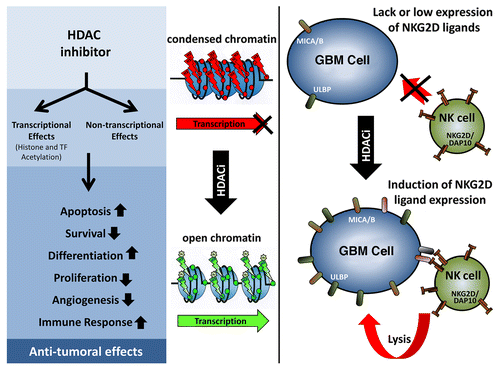Figures & data
Figure 1. Antitumor activity of HDAC inhibitors. Left: The inhibition of histone deacetylases (HDACs) causes both transcriptional and non-transcriptional effects, leading to profound alterations in cell homeostasis. Middle: The re-acetylation of histones upon HDAC inhibition stimulates gene transcription. Right: As a result of HDAC inhibition, NKG2D ligands (NKG2DLs) such as MHC Class I-related chain A and B (MICA/B) or UL16-binding proteins (ULBPs) are upregulated, rendering glioblastoma multiforme (GBM) susceptible to recognition and lysis by natural killer (NK) cells.
